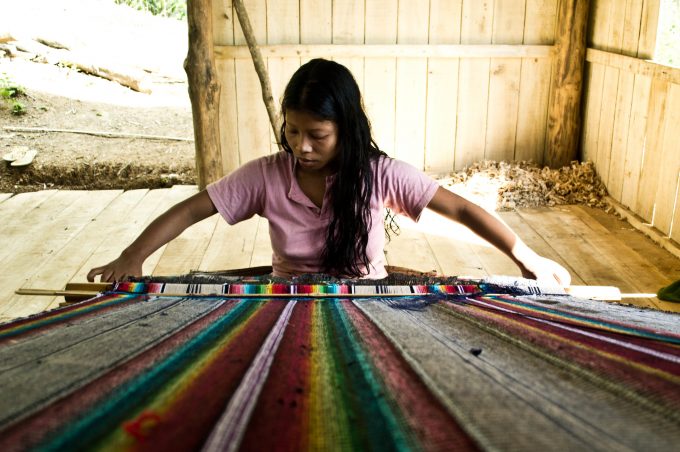Apparel buyers revive alternatives in India amid Bangladesh struggles
India’s textile/apparel export hub of Tirupur, near Chennai, in Tamil Nadu state, is bouncing back ...
FDX: ABOUT USPS PRIVATISATIONFDX: CCO VIEWFDX: LOWER GUIDANCE FDX: DISRUPTING AIR FREIGHTFDX: FOCUS ON KEY VERTICALFDX: LTL OUTLOOKGXO: NEW LOW LINE: NEW LOW FDX: INDUSTRIAL WOESFDX: HEALTH CHECKFDX: TRADING UPDATEWMT: GREEN WOESFDX: FREIGHT BREAK-UPFDX: WAITING FOR THE SPINHON: BREAK-UP ALLUREDSV: BREACHING SUPPORTVW: BOLT-ON DEALAMZN: TOP PICK
FDX: ABOUT USPS PRIVATISATIONFDX: CCO VIEWFDX: LOWER GUIDANCE FDX: DISRUPTING AIR FREIGHTFDX: FOCUS ON KEY VERTICALFDX: LTL OUTLOOKGXO: NEW LOW LINE: NEW LOW FDX: INDUSTRIAL WOESFDX: HEALTH CHECKFDX: TRADING UPDATEWMT: GREEN WOESFDX: FREIGHT BREAK-UPFDX: WAITING FOR THE SPINHON: BREAK-UP ALLUREDSV: BREACHING SUPPORTVW: BOLT-ON DEALAMZN: TOP PICK

Indian apparel exporters with ambitions for greater market share have spotted an opportunity, as sources believe the production lines and exports from Bangladesh will remain disrupted in the wake of the latest political flare-ups.
“For trade development, a lot depends on long-term political stability and harmonious business conditions,” one north India-based apparel exporter told The Loadstar.
Indian ready-made garment (RMG) exports by value in the just-concluded fiscal year 2023-24 saw a steep decline of 10.3%, year on year, according to the Apparel Export Promotion Council (APEC), while Q1 24-25 figures show a modest turnaround, up 4%.
But air freight capacity has been a major source of concern for the Indian apparel trade, which they blame, in some part, on the influx of Bangladesh transhipment cargo.
The air freight window for Bangladesh transit cargo at Delhi Air Cargo, under a government-to-government policy programme, went live a year ago, building on a similar arrangement at Kolkata Air Cargo in 2020.
Indian trade sources believe a likely slowdown or even a halt in Bangladeshi exports due to its developing political crisis, could release more airfreight capacity for domestic exporters, along with potential for freight rate benefits – at least in the near term. According to unconfirmed updates, land entry points for truck flows on the India-Bangladesh border have been sealed.
“Indian exporters must seize the opportunity coming their way,” a local industry observer told The Loadstar.
The stronger-than-expected spike in Bangladesh RMG flows via Delhi Air Cargo had exacerbated the capacity crunch for Indian shipments, as more ocean loads shifted to air amid the Red Sea crisis. It prompted Indian industry bodies, particularly APEC, to call on the government to review the policy regarding transhipment of third-country cargo.
AEPC noted that Bangladeshi truck visits to the Delhi air cargo complex were up to 30 a day. AEPC chairman Sudhir Sekhri said: “This [rush] has led to an excessive increase in air freight rates, delay in handling and processing of export cargo and severe congestion at the cargo terminal, resulting in Indian apparel exports through the air cargo complex becoming uncompetitive.”
The council has held a series of roadshows in potential global markets over the past year to drum up greater sourcing support for Indian RMG products, with a large exhibition in Tokyo last month the most recent.
AEPC secretary general Mithileshwar Thakur noted that India currently had just a 1% share of Japan’s global garment imports, worth some $23bn. He said: “We see a strong business opportunity in Japan.
“India is well poised to fill the gap created by the declining share of China in the Japanese market. India has intrinsic strengths, in terms of fibre availability, minimal import dependence, presence of complete value chain in each fibre, demographic dividend and range and variety of apparel offerings.”
New Delhi wants to expand the value of India’s RMG exports to $40bn by 2030 from the $14.5bn reported for 2023-24.
AEPC secretary general Mithileshwar Thakur told The Loadstar that Indian exporters are keen to expand market reach and volumes organically.
“The Indian garment industry is making serious efforts to grow RMG exports on its own,” Mr Thakur said. “However, it’s quite likely that in short term, garment orders may shift to India and the apparel industry may be asked to fill the gap caused by this severe disruption (in Bangladesh).”
Comment on this article